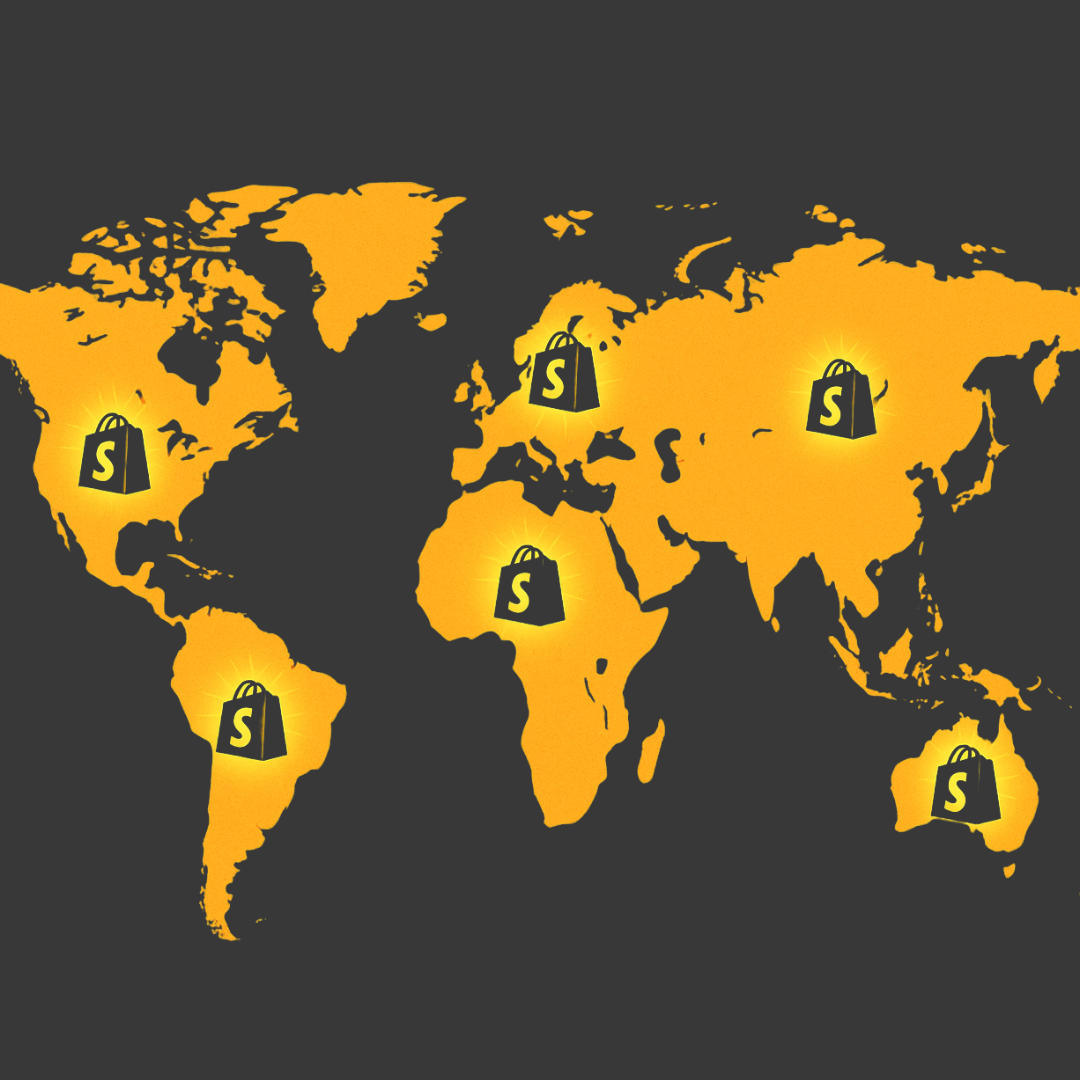Shopify Markets: An Amazing Tool But Not the Whole Story
For ambitious DTC brands, internationalisation is no longer optional, it’s the growth lever. Expanding into new regions unlocks new audiences, spreads risk, and creates first-mover advantages. And the good news? It has never been easier to “switch on” cross-border sales.
Shopify Markets is an incredible enabler. It lets you configure local currencies, duties, taxes, payment methods, and domains from inside the Shopify dashboard. In many ways, it’s a revolution, giving brands technical capabilities that once required custom builds and big budgets.
But here’s the reality: Shopify Markets alone isn’t enough. Turning on features isn’t the same as building a thriving global business. Successful expansion requires localisation, compliance, supply chain design, and fulfilment expertise. That’s where we come in. Let’s begin by taking a deep dive into internationalisation and global expansion and then tackle the practicalities of it.
The Case for Going Global
The prize is real: cross-border eCommerce is growing nearly twice as fast as domestic. For Shopify Plus merchants and high-growth DTC brands, staying confined to one market can quickly cap potential.
1. Growth Beyond Saturation
Domestic markets reach a ceiling fast. In the US, rising customer acquisition costs are squeezing margins. Expanding into Europe or Asia creates access to new audiences, often with less competition and lower CAC.
2. Diversification of Risk
Economic slowdowns and ad performance shifts don’t hit every region equally. Brands with multi-market presence are insulated. If sales soften in North America, APAC or the Middle East can pick up the slack. This isn’t just a growth play, it’s a resilience strategy.
3. Global Consumer Behaviour
Consumers now expect borderless commerce. A Statista report found 57% of shoppers purchased cross-border in the last year. If you don’t make it easy, your competitors will.
4. First-Mover Advantage
Early entrants gain trust and loyalty. We’ve seen athleisure brands carve out dominant positions in Europe and the Middle East simply by being the first DTC brand to offer a premium localised experience.
The opportunity is enormous. But only if you enter markets with the right blend of technology and strategy.
What Shopify Markets Does Brilliantly
We need to be clear: Shopify Markets is game-changing. It removes the technical barriers that used to hold smaller brands back from selling internationally.
Currency Conversion & Local Pricing
Markets displays prices in local currency with live exchange rates. This removes the friction of mental conversion at checkout.
For example, A US skincare brand saw conversion rates in Canada lift once they showed prices in CAD, even though the underlying USD pricing hadn’t changed.
Localized Storefronts & Domains
Country-specific domains (.co.uk, .de, etc.) build credibility. Local shoppers trust local URLs.
For example, For UK shoppers, a .co.uk site signals legitimacy, improving click-through and reducing bounce rates.
Duties & Import Taxes
Markets shows duties and taxes upfront. Customers aren’t hit with surprise courier fees, meaning fewer returns and higher satisfaction.
For example: A US footwear brand expanding to Europe halved their rate of angry customer emails after switching this on.
Payments
Markets integrates local payment methods. Credit card penetration isn’t universal; alternatives matter.
- In the Netherlands, iDEAL is essential.
- In Germany, PayPal dominates.
- In Asia, wallets like Alipay or GrabPay are non-negotiable.
Shopify Markets makes these once-complex features accessible in a few clicks. It’s incredible tech. But it’s not the whole story.
Why Markets Alone Won’t Get You There
Shopify Markets handles the checkout experience. But thriving globally requires addressing the operational realities of trade.
Localisation vs Translation
A literal translation of your website isn’t enough. Spanish customers don’t just want “zapatos”, they want sizing that matches their standards, marketing that resonates with cultural values, and imagery that reflects their lifestyle.
Tax & Compliance
Europe’s VAT is complex. Australia requires GST registration from day one. Then there’s GDPR, LGPD, and Chinese data laws. These aren’t optional. Mistakes lead to frozen shipments or heavy fines.
Fulfilment & Returns
A two-week delivery from the US to Germany? Customers won’t come back. Without regional fulfilment and seamless returns, even great products won’t scale globally.
Supply Chain Complexity
Where should you warehouse inventory? How do you forecast across hemispheres with opposite seasons? These are strategic questions that determine profitability.
Markets clears the path. But only strategy turns it into a road.
Where Total Commerce Partners Fits In
We’re big believers in Shopify Markets. But we also know that toggling features isn’t the same as being ready for global growth. Expanding internationally is about more than checkout settings, it’s about building a business that can truly deliver on its promise across borders. That’s where we come in.
1. Readiness Audits
We assess the full eCommerce operation, from product data and tax setup to carrier partnerships and customer service workflows. Can your platform handle multiple VAT regimes? Are your shipping partners equipped for international compliance? Shopify Markets won’t flag these risks. But we will.
2. Strategic Localisation
We help clients create experiences that resonate. That means more than translation, it’s adapting the complete online experience, including imagery, sizing guides, payment preferences, and even merchandising for cultural fit.
For example, if a fashion brand moves into Europe, we would advise on converting US sizing to EU standards and adjusting product photography for local expectations. Our goal? That their customers feel it was their brand, not a foreign import.
3. Compliance Navigation
International regulations are complex and unforgiving. From VAT in Germany to labelling requirements in Australia to consumer returns law in the UK, we help you to make sure your expansion is compliant from day one. Many brands only discover these roadblocks when goods are stuck in customs or websites are blocked. We help you make sure that never happens.
4. Fulfilment Strategy
Delivery speed and returns can make or break customer trust. We design fulfillment approaches that balance speed, cost, and brand promise, whether that’s setting up EU-based 3PLs, leveraging bonded warehouses, or refining returns processes.
For example, apparel clients may drastically cut delivery times in Europe by adopting a local fulfillment partner, which can directly boost repeat purchase rates.
5. Sustainable Scalability
The first order in a new market is easy. Scaling to tens of thousands requires robust inventory planning, multi-region demand forecasting, and localised customer support. We guide eCommerce brands through this transition so international growth is profitable and sustainable, not chaotic.
The Pragmatic Path Forward
Shopify Markets is amazing. It’s one of the most powerful tools for DTC brands to expand globally. But let’s be clear: it’s not the entire solution.
Without strategic oversight into localisation, compliance, fulfilment, and supply chain planning, the risk is costly false starts.
That’s where Total Commerce Partners bridges the gap. We help brands use Shopify Markets to its fullest while building the operational backbone that turns international selling into sustainable international success.
If you’re a Shopify Plus brand ready to expand globally, let’s talk. We’ll help you get the best out of Shopify Markets, and add the expertise needed to make global expansion work in the real world.




